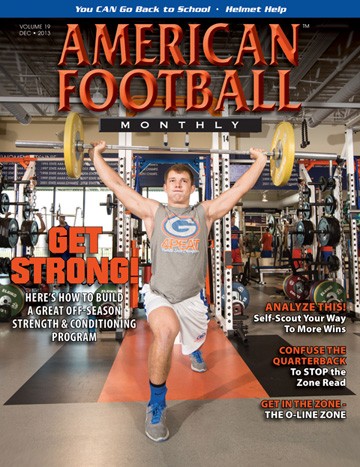AMERICAN FOOTBALL MONTHLY THE #1 RESOURCE FOR FOOTBALL COACHES
|
|
Article Categories
|
Get Strong Four Proven Off-Season Strength and Conditioning Programsby: AFM Editorial Staff© More from this issueBISHOP GORMAN HIGH SCHOOL
Las Vegas, Nevada
Head Coach Tony Sanchez
Enrollment 1,200 students
9-12 Football Program 160-180 athletes
Four consecutive Nevada 4A Championships, Nationally-Ranked Program
Sean Manuel serves as Head Strength and Conditioning Coach and also coaches the offensive line at Bishop Gorman. When he joined the Gorman staff in 2010, he completely revamped the outdated strength and conditioning facility.
The Facility
Our weightroom facilities include a 4-lane, 60-yard track, 22 work stations (11 half racks, 11 full racks that include four pneumatic air-run power racks). The racks are connected by cross suspension pieces that provide us the ability to do cross suspension work outside the racks. Each work station (rack) has a single leg squat pad, TRX band, dip attachment, ....The full article can only be seen by subscribers.
Subscribe today!

|
|
|
NOT A SUBSCRIBER?
Subscribe
now to start receiving our monthly magazine PLUS get INSTANT
unlimited access to over 4000 pages of 100 percent football coaching
information, ONLY available at AmericanFootballMonthly.com!
|
|
|
HOME
|
MAGAZINE
|
SUBSCRIBE
|
ONLINE COLUMNISTS
|
COACHING VIDEOS
|
Copyright 2025, AmericanFootballMonthly.com
All Rights Reserved






